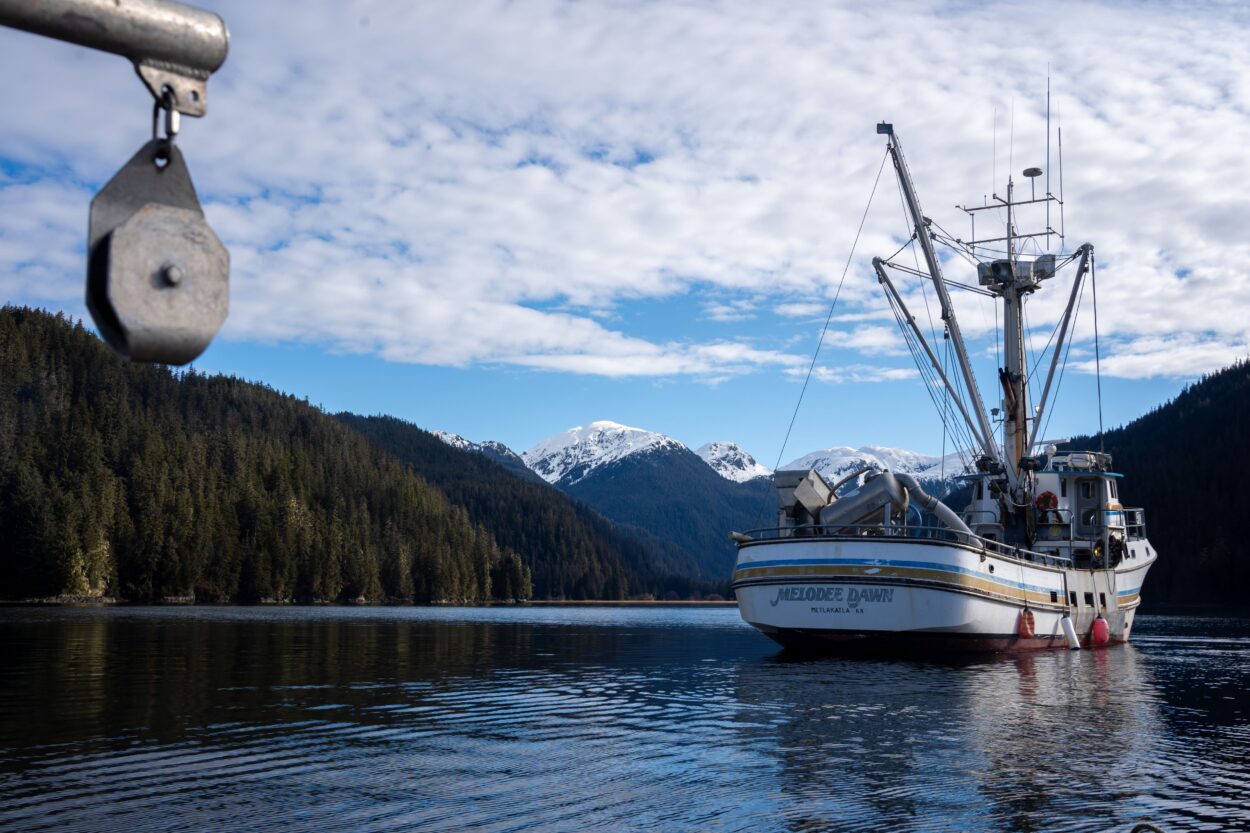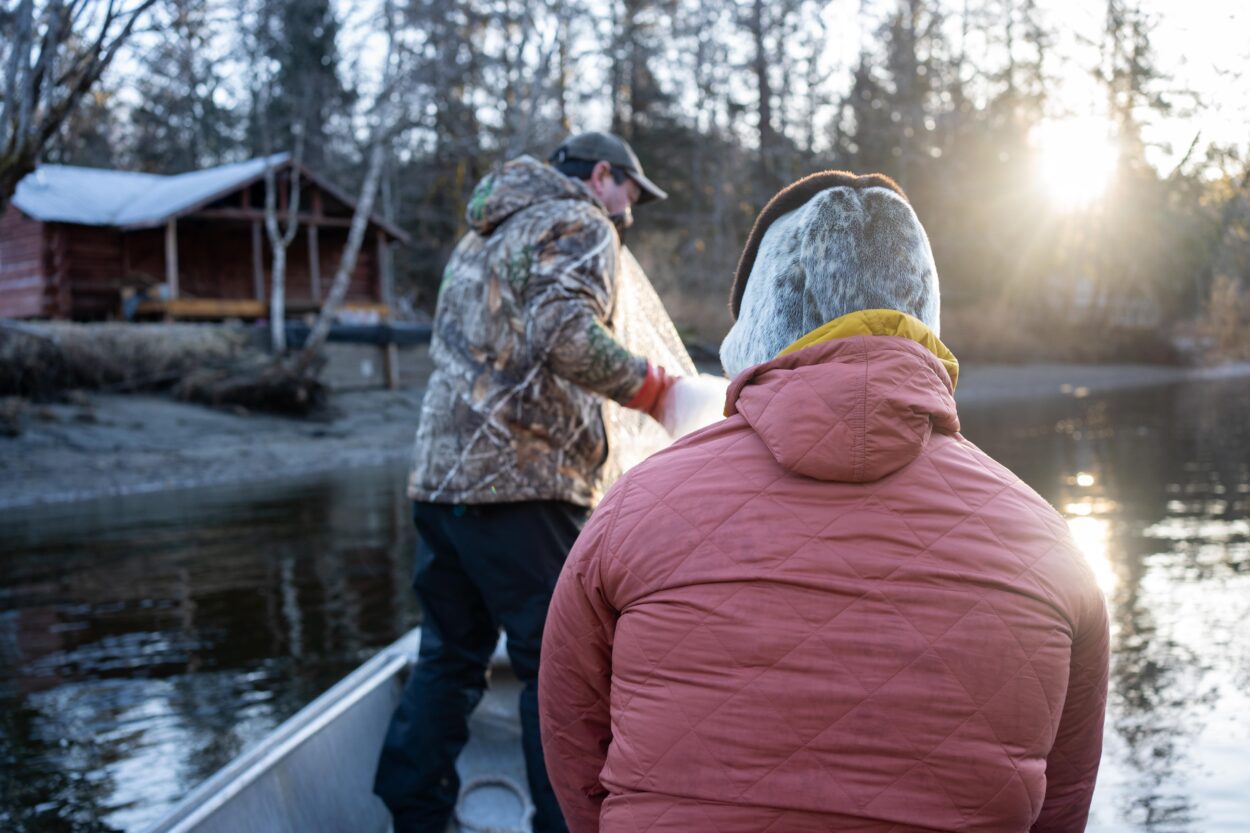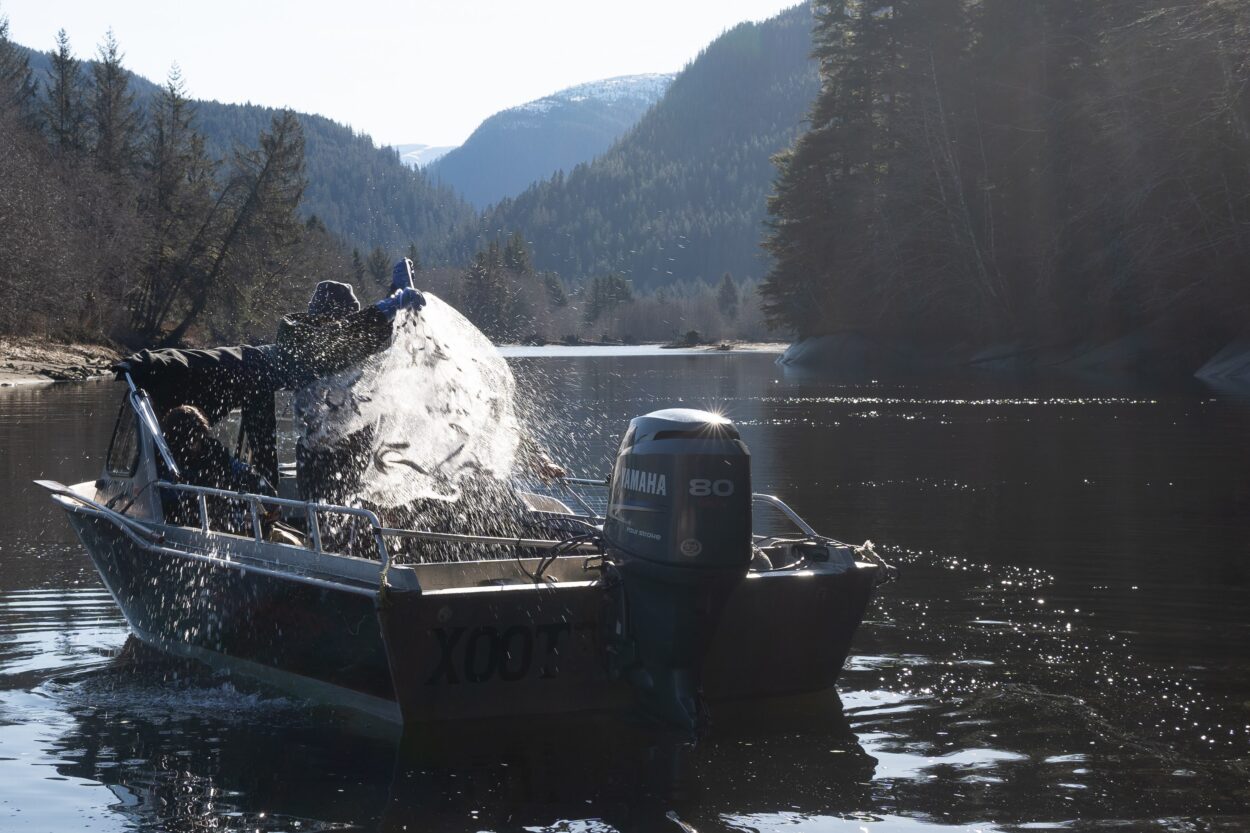
When hooligan start running in Southeast Alaska at the end of winter, the Wagner family heads to the mouth of the Unuk River.
Tazia Wagner steers the skiff as her uncle throws a weighted cast net into the muddy water. He hauls up a net full of wriggling, oily little fish. They’re aiming to fill five five-gallon buckets. That’s their hooligan allotment under federal regulations for subsistence in the river. It used to be a lot higher, until the population collapsed around 2004. The Wagner’s blame that collapse on mining operations that started upriver in the 1990s.
After the buckets are filled, they take them back to the Melodee Dawn, the family’s old commercial seiner.
It’s docked near a rising sun petroglyph painted onto the rocks above the river. Tazia’s grandfather Louie Wagner says that sun is thousands of years old and is a family crest of their ancestors, the Tlingit brown bear clan, or Teikweidí.
“It’s not just fish,” Tazia says of her family’s legacy on the Unuk, and what’s at stake. “It’s a loss of cultural identity and a loss of connection to the land and to our people.”
To save what’s left of this hooligan run for future generations, the Wagner family helped form the Southeast Alaska Indigenous Transboundary Commission, or SEITC. It’s currently a coalition of 17 tribes with the goal of securing a seat at the table in how proposed mining projects are managed on Canadian soil if they directly impact watersheds in Alaska.
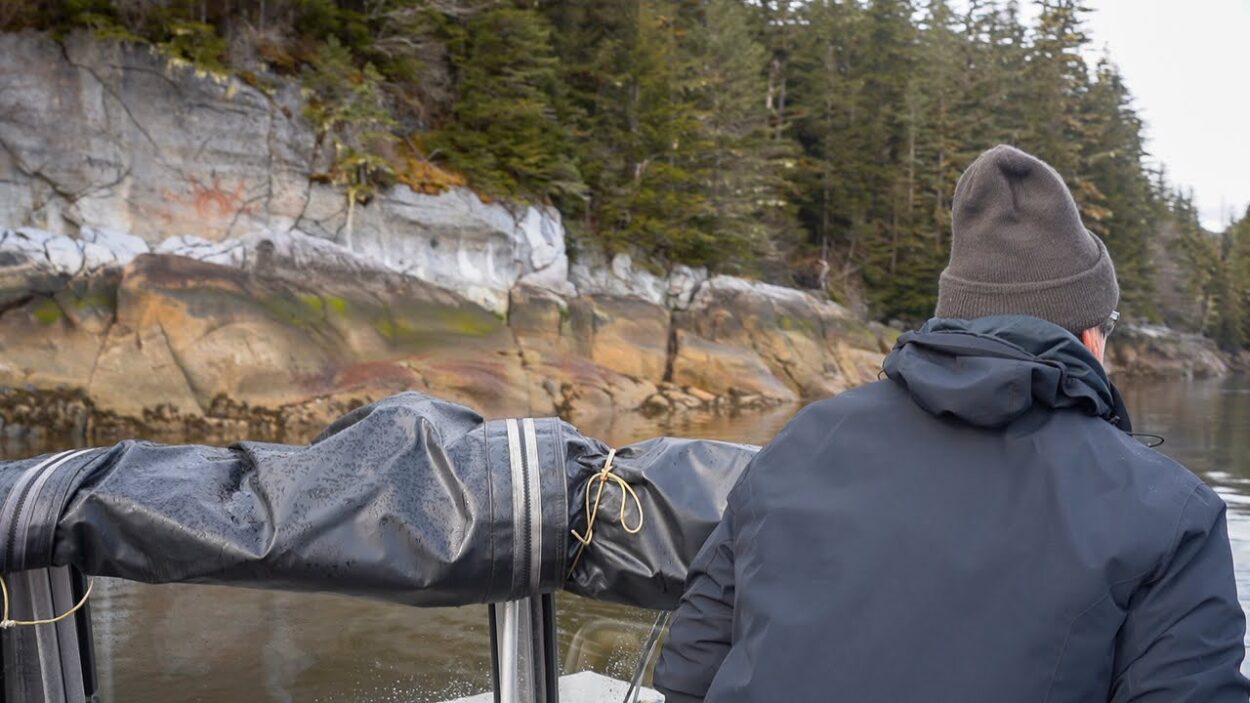
***
In April, British Columbia’s ministry of the environment sent the SEITC a letter in response to their request for consultation on the Eskay Creek mine, a large gold mine at the headwaters of the Unuk. It was in production in the ‘90s but was eventually shuttered. The SEITC say the lower Unuk River is still recovering from the downstream impacts. Now, a Canadian mining company is in the permitting stage for reopening the mine. Skeena Resources, Ltd, the company in charge of the project, said the mine is “extremely high-grade” and could produce up to 2.8 million ounces of gold and 80 million ounces of silver in a little over a decade.
Guy Archibald, SEITC’s director, said there is a lot of administrative language about statutes and process in the letter but the way he read it was, “Different groups of Indigenous people, apparently, are only eligible for different levels of human rights.”
Essentially, the letter said that British Columbia is developing a process for consulting with US tribes that would be “distinct” and “differentiated” from Canada tribes.
Esther Reese, SEITC’s president, said it felt like a continuation of a “colonial divide-and-conquer” tactic. She said the tribes across the border were their neighbors and equals before their ancestral homelands were split by an international boundary, which now feels like a wound.
David Karn represents the Environmental Assessment Office of British Columbia’s Ministry of the Environment. He didn’t agree to a recorded interview but sent a long email response. Karn said in the email that the province’s goal is to honor the Canadian Crown and “act with good faith to provide meaningful consultation appropriate to the circumstances.”
Karn also said that the tribes across the Canadian border are interested in being part of deciding what that consultation for SEITC will look like. Those tribes include the Tahltan, whose territory encompasses the headwaters of the Unuk and Eskay Creek, the site of the proposed gold mine the SEITC are pushing back against. The Tahltan tribal government has publicly supported the mine.
Archibald said that time is not on SEITC’s side here. While British Columbia’s tribal consultation policy is being developed, Archibald expects Eskay Creek to go into the environmental application stage. That’s one step before a lease is granted.
“And so they kind of skipped over the whole idea that the Southeast Alaska tribes do have rights that need to be recognized,” said Archibald.
The coalition’s greatest leverage comes from the Desautel case, a 2021 Canadian Supreme Court decision that set the precedent that Indigenous people who live outside of Canada can be granted the same rights as those in the country if their traditional territory lay within what is now Canada.
“I think if we interpret Desautel, it’s very clear from the evidence we’ve submitted that we meet the threshold legal test for recognizing SEITC and its tribes as protected under the Canadian Constitution,” said Ramin Pejan, an attorney for Earthjustice, a nonprofit environmental law group representing the SEITC.
Earthjustice and the SEITC believe British Columbia’s policy is in direct opposition to the Desautel decision. And they have since been joined by the Lummi nation in Washington, who say that British Columbia is expanding a large port on a river that threatens their fisheries.
“Although this is an issue of Indigenous rights in which Lummi, Alaskan and many First Nations find common cause,” Lummi Nation Chairman Anthony Hillaire said in a prepared statement, “it also affects every person who lives here and who depends on the clean waters, the rivers, and the fish of this region.”
Meanwhile, SEITC and British Columbia are in the briefing stages of a potential case with the Inter-American Commission for Human Rights. The tribal coalition submitted a petition in 2020 accusing Canada of violating their human rights, including their right to a healthy environment on the Unuk River and the international commission accepted it for further review.
Archibald said the next steps for SEITC and the Lummi Nation are clear.
“We’re going to push back in every administrative way possible,” he said. “Is this eventually leading to a lawsuit? Very possibly. But we would like BC to do the right thing.”
***
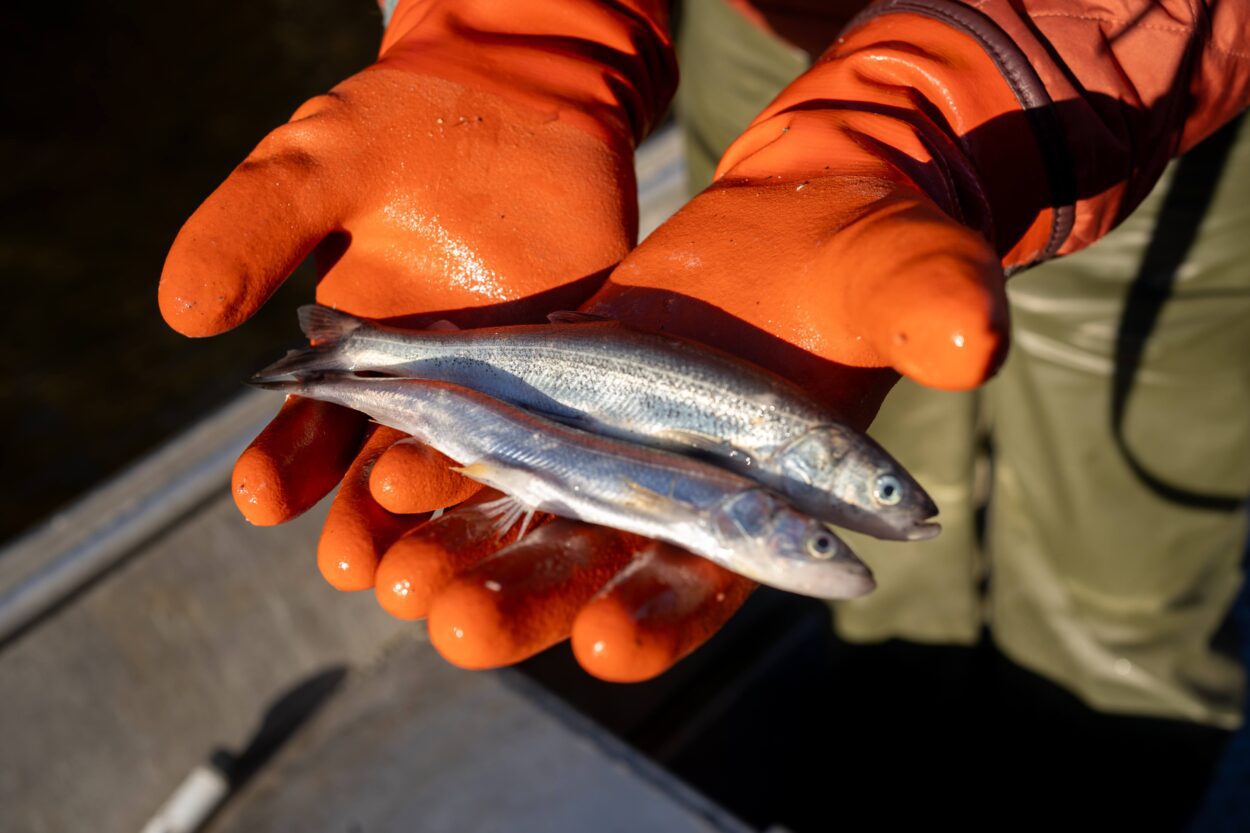
Hooligan grease is made by fermenting and cooking down tons of hooligan. It’s an important food culturally for Tlingit, Haida, and Tsimshian peoples. Largely because, as Tazia’s mom Lee Wagner says, it’s delicious. She describes it as rich and fishy, like an umami butter.
The family called it “liquid gold.” But further up the river, there is real gold. And the Wagners say that’s the problem. It’s why they helped form the SEITC.
“We thought we were kind of alone in all of the effects of our subsistence and our cultural rights and our way of living being slowly stripped away,” said Lee Wagner. “But we’re discovering that we’re not the only ones, and that’s really, really scary.”
The five buckets they filled today won’t be enough to make grease.
“Not at all. Maybe a little drop,” Lee Wagner laughed.
But Tazia Wagner chimed in to say that the hooligan represent more than that. They mean ancestral rights, food sovereignty, agency.
She’s sitting in the captain’s chair of the Melodee Dawn, her grandfather’s chair. The evening view out the pilothouse windows was a pod of sea lions. Behind them, snow-capped mountains and the yawning mouth of the Unuk.
“It’s to feed, not only ourselves and our bodies, but also our souls, and to be able to share all of that with each other — that’s that connection,” she said. “It’s really, really frightening to think about how one day without any of this, how it would look for any of us, Native or non-Native. I don’t know what that is supposed to look like.”
Get in touch with the author at jack@krbd.org.
